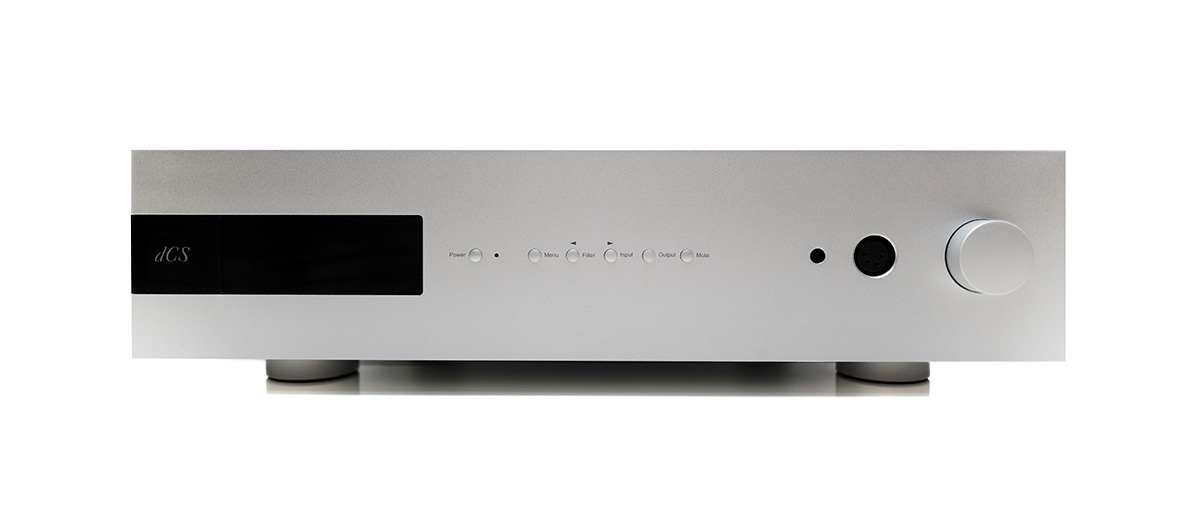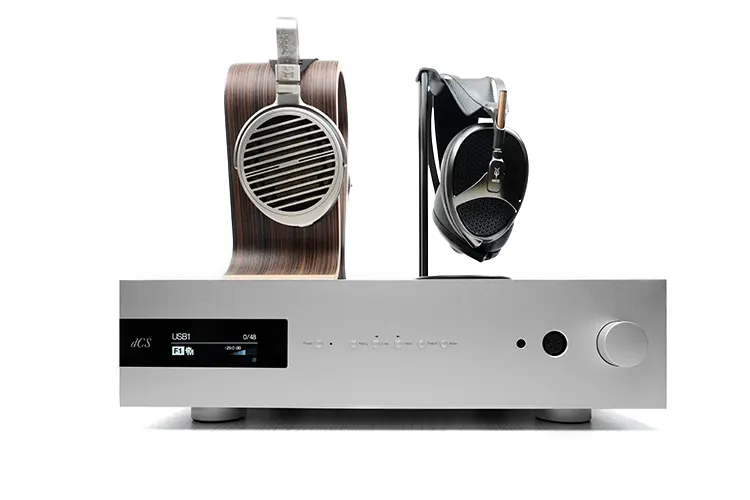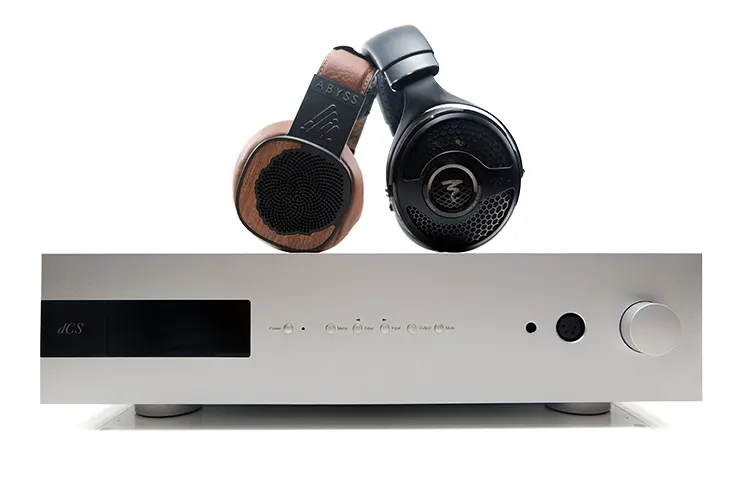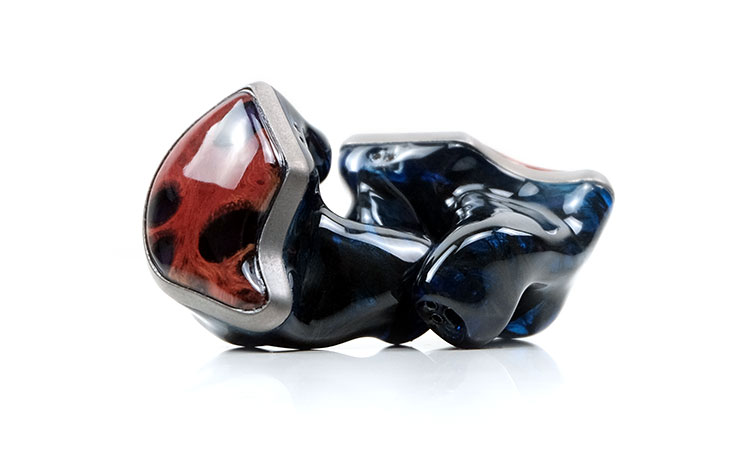How does the Bartok APEX Sound?
The following sound impressions of the Bartok APEX were completed using a mix of the HIFIMAN Susvara, ABYSS DIANA MR, and the Focal Utopia 2022 headphones in a balanced configuration with a USB signal from a PC/Roon transport.
Summary
If anything, the core identity of the Bartok APEX tuning has strengthened over the original, (and the 2.0). This is still a smooth, bottom-weighted tuning with bags of detail and one that I find a world-class pairing with neutral headphones or those that rely on a solid fundamental to sound at their best.
However, you want to know where that additional cash for the upgrade has gone and for me, the Bartok APEX enhances the coherency of the performance markedly over the original with each headphone I paired with it.
Everything sounds even more natural in tonality now, particularly in the upper-mids and highs which I often felt was slightly at odds with the lows on the original Bartok. There is less of a ‘digital’ edge and more of a firmer weight or improved body on percussion, head, and mixed voicing.
The upgraded version also improves the resolution and definition of more nuanced spatial detail with the new MAP 1 setting, (and MAP 3), with headphones that are up to the task of presenting micro-detail articulately.
In some instances with the HIFIMAN Susvara pairing, higher-register percussion passages using MAP 1 were so clear and precise that it made the older MAP 2’s sound almost slightly smeared and softer sounding on the same tracks.
The firmness of the Bartok APEX bass impact and the definition of those lower register notes also seem to have improved over the original and 2.0.
Not so much in terms of bass quantity but rather in the finesse and quality of the output giving you a stronger perception of the potential dynamic range of the performance and the fundamental of each note.
Coloration
The concept of a core identity in my opening statement regarding the Bartok APEX was made regarding how dCS has defined its tuning to differ from its own number one competing product, the Lina System.
The Lina delivers a high-energy cleaner but less weighted tonal quality with a stronger treble emphasis to create a very precise and revealing sound signature. Subjectively, it’s built for speed and one I tend to match with headphones that can cope with that such as the ABYSS DIANA TC.
The Bartok APEX takes a different path here. It’s a fuller-sounding offering, much firmer on the lows, more natural and smoother in the mids, and arguably, more relaxed in the forwardness of the highs.
Thus, the timbre subjectively will sound more natural with most headphone pairings but with more of a bass-to-mids emphasis and a bias to even-harmonics.
That is not to say dCS has produced a dull-rounded tonal quality to the Bartok APEX, far from it. The clarity and extension are excellent, rather the treble influence is less pervasive when compared to the Lina system so the dynamics are more focused on the power and solidity of the performance.
This is where the DIANA MR or the DCA E3 fit in more effectively as pairings. Two headphones that need a solid injection of weight on the lows to sound ‘complete’.
Lina Master Clock Pairing
There is the Bartok APEX before and the Bartok APEX after adding the Lina Master Clock. A night and day difference in the performance of the unit.
Honestly, the only reason why you might not wish to add the Clock is how much is left in your budget after upgrading to or buying the APEX.
Dynamics is probably the first thing noticeable improvement you will hear in the performance. Everything sounds punchier and more incisive like shining a light or a magnifying glass on both the detail and the pace at which that detail appears and disappears.
Without the Master Clock, the Bartok APEX sounds a little softer on the lows with vocals sounding ‘smaller’ and less vivid for want of a better phrase.
With the Lina Master Clock attached, the vocals sound is texturally richer but not warmer. It’s as if an additional even-harmonic layer just dropped in fattening the low-end performance, enhancing vocal bloom, and adding just a hint of shine on top creating a sweeter performance.
The second Lina Master Clock knock-on effect is the improvement in the complexity of the soundstage performance. A benefit that sort of rolls on naturally from the first observation.
Whatever size of the respective staging performance from your headphones, you are going to hear an improvement in the BARTOK APEX’s imaging depth and articulation.
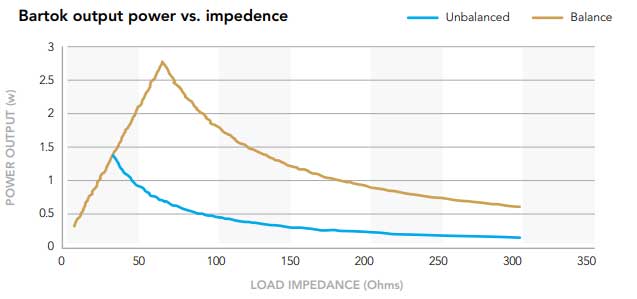
Synergy
Driving Power
While the Ring DAC has been upgraded to APEX, the Bartok APEX amplifier remains unchanged. That is not to say the quality of the output is unchanged, because it most certainly has, but rather the rated output power is consistent with the older model.
Much has been made of the milestone 1.4W per channel into a 32Ω load stepping down to 0.15W on a 300Ω load rating as not being particularly high for demanding headphones.
However, the above graph shows you a more revealing picture of the Bartok APEX headphone output capability as being closer to 3W for headphones when going balanced with loads of roughly 60-70Ω and over 500mW for 300Ω alternatives.
That would apply to headphones such as the 60Ω HIFIMAN Susvara and to some extent the 80Ω Focal Utopia 2022 also which would receive over 2W in balanced mode. So, there is more headroom there than the milestone figures might suggest.
That doesn’t mean the likes of the Susvara won’t tax your volume and gain levels on the Bartok APEX.
Depending on the quality of the recording, I have always found the Susvara to sit comfortably around -15 to about -10 dB with the 0 dB gain level setting. Anything lower gain-wise and you will run out of dB volume level for adequate listening levels.
The Focal Utopia 2022, on the other hand, rests very comfortably around -30 dB on the Bartok APEX 0 dB gain setting. That means you can mess around with the gain controls a bit more and still retain decent volume headroom though I still prefer the better dynamics and energy from the 0 dB gain level.
Headphone Pairings
I tested four headphones with the Bartok APEX for this review. They included the closed-back planar DCA E3, the Focal Utopia 2022, the ABYSS DIANA MR, and the almost mandatory HIFIMAN Susvara.
All 4 sounded excellent when paired with the APEX in balanced mode but I think this is where I started seriously playing with the mapper choices.
For example, the new MAP 1 mapper caught my ear with the Susvara over the treble tones with tighter control of the decay and slightly enhanced dynamic range on higher pitching fast-paced synth notes compared to the original Map 2 option.
Map 2 sounded just a little softer with more trailing edges over the same notes with slightly less definition. The resulting difference is very nuanced but the overall impression was a slight smear on these notes with MAP 2 compared to MAP 1 using the Susvara.
For the DIANA MR and the Utopia 2022, both will sound a little more articulate and cleaner sounding on the Lina system but if its body and power you are after then the Bartok APEX is the better home for both headphones, particularly the MR.
The Utopia 2022 is more punchy sounding than sub-bass heavy but more so was the excellent treble response. I was a little worried that Utopia 2022 might sound too laid back with this pairing but nothing could be further from the truth. It has excellent clarity throughout and just the right balance of treble presence and body.
The DCA E3 needs to be on the Bartok APEX, much more so than with the original Bartok or even the Lina Headphone amplifier. Its smoother upper-mids and treble performance combined with the better low-end weight seems to suit the E3’s more aggressive tuning.
Noise Floor
The low noise floor from the Bartok APEX is impressive for sensitive IEMs. I also tested a selection of IEMs back in the original Bartok review from 2019 and from my notes the only one I rated as perhaps too sensitive for the original noise floor level was the Campfire Audio Solaris SE.
Well, I went back to that very same IEM in single-ended mode just to see how it fared and the answer was much more acceptable than I expected.
There is still a tiny bit of waterfall hiss on the – 30dB gain setting and the audio is audible on the 0 dB setting but otherwise running through the former gain level as opposed to the latter gave me loads of delicate volume control.
IEM Pairings
For every other IEM, the Bartok APEX is world-class in its performance it will surprise you just how deft it is at handling various driver configurations. IEMs such as the Unique Melody Multiverse Mentor and further down the chain, the more demanding Campfire Audio Supermoon produced some very commanding performances.
I will note that the black background and the welcome bass weight and firmness of the timbre were two highlights from the Multiverse Mentor.
Without a dynamic driver for the lows, you want to ensure this BA woofer IEM has enough of a fundamental to convey just how good its staging properties can be. The Bartok APEX’s firmer punchier lows delivered just that.
For the Supermoon, that smoother more coherent treble performance from the Bartok APEX was a perfect pairing with the CA tuning which tends to take no prisoners if the upper-mid percussion energy gets too hot.
For example, Bartok APEX sounded energetic with the Supermoon with some firm bass guitar plucks shining through but nothing edgy or digital sounding on the highs with the likes of Metallica’s “72 Seasons”.
This is the title track of their new album and one that has a lot of snare and hi-hat presence in the mix that can sound rough on the Supermoon with brighter leaner pairings.
Click on page 3 below for my comparison with the dCS Lina system.

